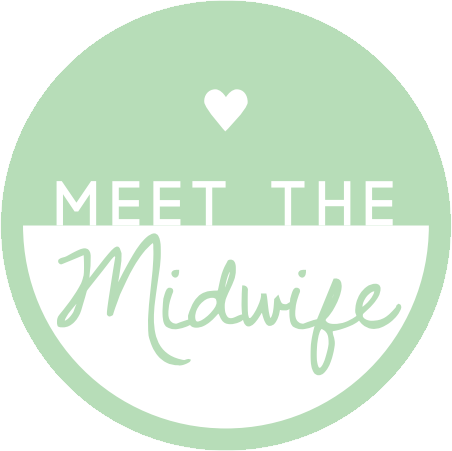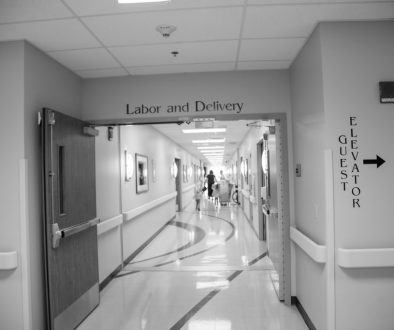 Recently, a woman explained that during delivery of her baby she pushed for 3.5 hours on her back, in the “dorsal lithotomy” position, using an epidural for pain relief. Dorsal lithotomy means the woman is laying on her back with her legs in stirrups. She explained that she was diagnosed with “failure to progress” and this resulted in an emergent cesarean. Now there is no saying for 100% sure that if she changed positions the baby would have been born vaginally but I will say that I have witnessed the many benefits of position changes. Frequent position changes during pushing helps the baby engage and move down into the mother’s pelvis. Some positions can open the mothers pelvis 20-50% more making it easier for the baby to be born.
Recently, a woman explained that during delivery of her baby she pushed for 3.5 hours on her back, in the “dorsal lithotomy” position, using an epidural for pain relief. Dorsal lithotomy means the woman is laying on her back with her legs in stirrups. She explained that she was diagnosed with “failure to progress” and this resulted in an emergent cesarean. Now there is no saying for 100% sure that if she changed positions the baby would have been born vaginally but I will say that I have witnessed the many benefits of position changes. Frequent position changes during pushing helps the baby engage and move down into the mother’s pelvis. Some positions can open the mothers pelvis 20-50% more making it easier for the baby to be born.
Did you know you can still change positions in bed with an epidural? Just ask to have your epidural low dosed so you can still move your legs. How cool is that? After all, women were not meant to have babies on their back in bed. If you decide you want to go natural you will learn that it is very uncomfortable to be in bed on your back during active labor. Not to mention changing positions acts as pain relief, helps the baby move down and engage in the pelvis, and it helps labor progress by utilizing gravity and helping the mother relax. Don’t worry your midwife has you covered—she is trained not only to provide you with support during labor, she can deliver your baby in almost any position that is comfortable for you.
The following labor positions can be used during labor to act as pain relief + open up the mother’s pelvis:
- Squatting: Squatting helps widen the pelvic opening for baby to come out. It relieves back pain, it speeds up labor, relaxes the perineal muscles so you are less likely to tear, and improves oxygenation to the baby. It also helps promote delivery of the placenta after the birth of your baby. Practice this position during your pregnancy. Remember it can help open up your pelvis 20-30% more, making it an easy pathway for baby.
- Hands and Knees: This position looks how it sounds. The laboring mother kneels on both knees and leans forward onto her hands or leans on other support devices like pillows or a birthing ball. Personally, I have found that the woman loves the lean over the birthing ball as it helps her relax. You can do this position on the floor if you have a soft surface like carpet or a yoga mat or it can be done in a bed. This position is very comfortable for a mother going natural but it can also be done if the mother has an epidural—as long as she has excellent support from a doula, nurse, and midwife.
- Side lying: In this position you can lie on your left or right side. Your body is supported with at least five pillows—one or two under your head, one supporting your top knee, one behind your back, and another under the abdomen bulge. This position can be helpful when the mother is tired and needs a rest from being upright. This position can also be done with and without an epidural. This birthing position is very effective for maintaining relaxation. The woman is able to reduce unnecessary muscular effort….this results in less fatigue during a long labor and greatly increases her comfort level.
- Dorsal lithotomy: This is one of the most common birth positions in a hospital. In this position the woman li
 es flat on her back or at a slight incline with her legs in stirrups. There really are no advantages to this position other than it doesn’t interfere with the urinary catheter, IV line, or fetal monitoring system. It also provides an easy access to the perineum for healthcare providers. If you want to avoid tearing, you want to avoid this position. This position also results in the narrowest pelvic opening and puts pressure on the coccyx. This position increases the need for vacuum and forceps delivery. The woman has to push against gravity in this position. It also increases the risk of having a malpositioned baby resulting in a slower progression of labor.
es flat on her back or at a slight incline with her legs in stirrups. There really are no advantages to this position other than it doesn’t interfere with the urinary catheter, IV line, or fetal monitoring system. It also provides an easy access to the perineum for healthcare providers. If you want to avoid tearing, you want to avoid this position. This position also results in the narrowest pelvic opening and puts pressure on the coccyx. This position increases the need for vacuum and forceps delivery. The woman has to push against gravity in this position. It also increases the risk of having a malpositioned baby resulting in a slower progression of labor.
It’s important to remember there is definitely more than one position you can try during labor and your midwife will help you change positions frequently. Listen to your body and try to practice these positions during your pregnancy. Request for frequent position changes while you are pushing—this can be done with and without an epidural. Now you are on your way to a positive birth experience.


